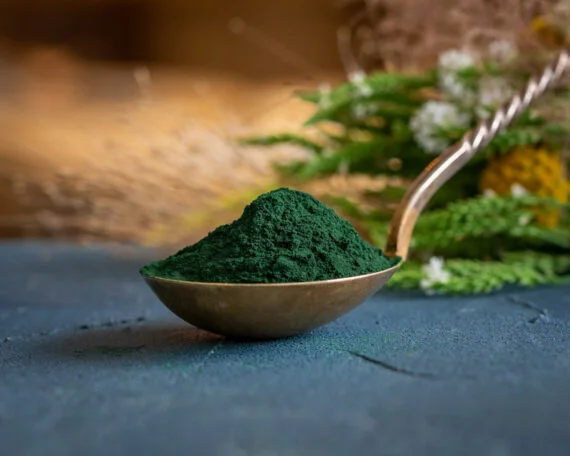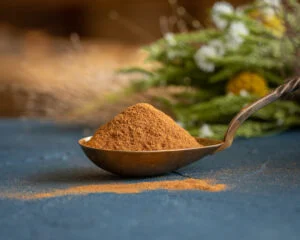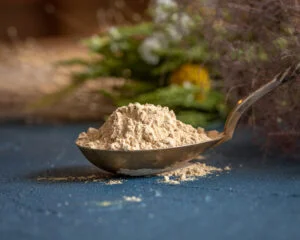Organic green spirulina powder
From 2.20€
Spirulina, a nutrient-rich algae, has gained popularity as a superfood because of its impressive health potential. Organic blue spirulina and green spirulina have attracted attention not only for their health benefits but also for their sustainable cultivation methods.
Organic green spirulina
Chlorophyllin – Green spirulina gets its colour from chlorophyllin, a chlorophyll derivative. Chlorophyllin is known for its potential detoxifying and antioxidant properties.
Protein – Similar to blue spirulina, green spirulina is also a rich source of plant protein, providing all essential amino acids.
Vitamins – Green spirulina contains vitamins such as B vitamins (B1, B2, B3, B6, B9 and B12), vitamin C, vitamin E and vitamin K, which contribute to various physiological functions.
Minerals – Green spirulina is rich in essential minerals such as iron, magnesium, potassium, calcium and zinc, which support overall health and vitality.
Carotenoids – Green spirulina contains more carotenoids than blue spirulina, including beta carotene, zeaxanthin and lutein. These compounds act as powerful antioxidants and support eye health.
Essential fatty acids – Green spirulina may contain essential fatty acids, including alpha-linolenic acid (ALA), which contribute to heart health and general well-being.
Consumption according toExamine.com:
In the case of cholesterol, doses of 1-8 g/day can make a difference
For muscle performance, doses of 2-7.5 g/day were used
A very mild effect on blood glucose control has been observed with 2 g/day
Blood pressure may be affected by doses of 3.5-4.5 g per day
Effects on fatty liver have been observed at doses of 4.5 g/day
Attention
Allergic reactions – people allergic to seafood or algae may be sensitive to spirulina and should take care.
Digestive discomfort – in some cases, taking spirulina can cause mild digestive problems. Starting with small amounts and gradually increasing intake can help to assess tolerance.
Spirulina is not recommended for people with autoimmune diseases and for pregnant and lactating women.
Sources:
https://www.ncbi.nlm.nih.gov
https://www.sciencedirect.com
NOTE. The information contained herein should not be construed as a recommendation for treatment or other health issues. We encourage you to make personal decisions about your personal health, taking into account a wide range of sources of information.
Organic spirulina powder 100% organic
-
-



